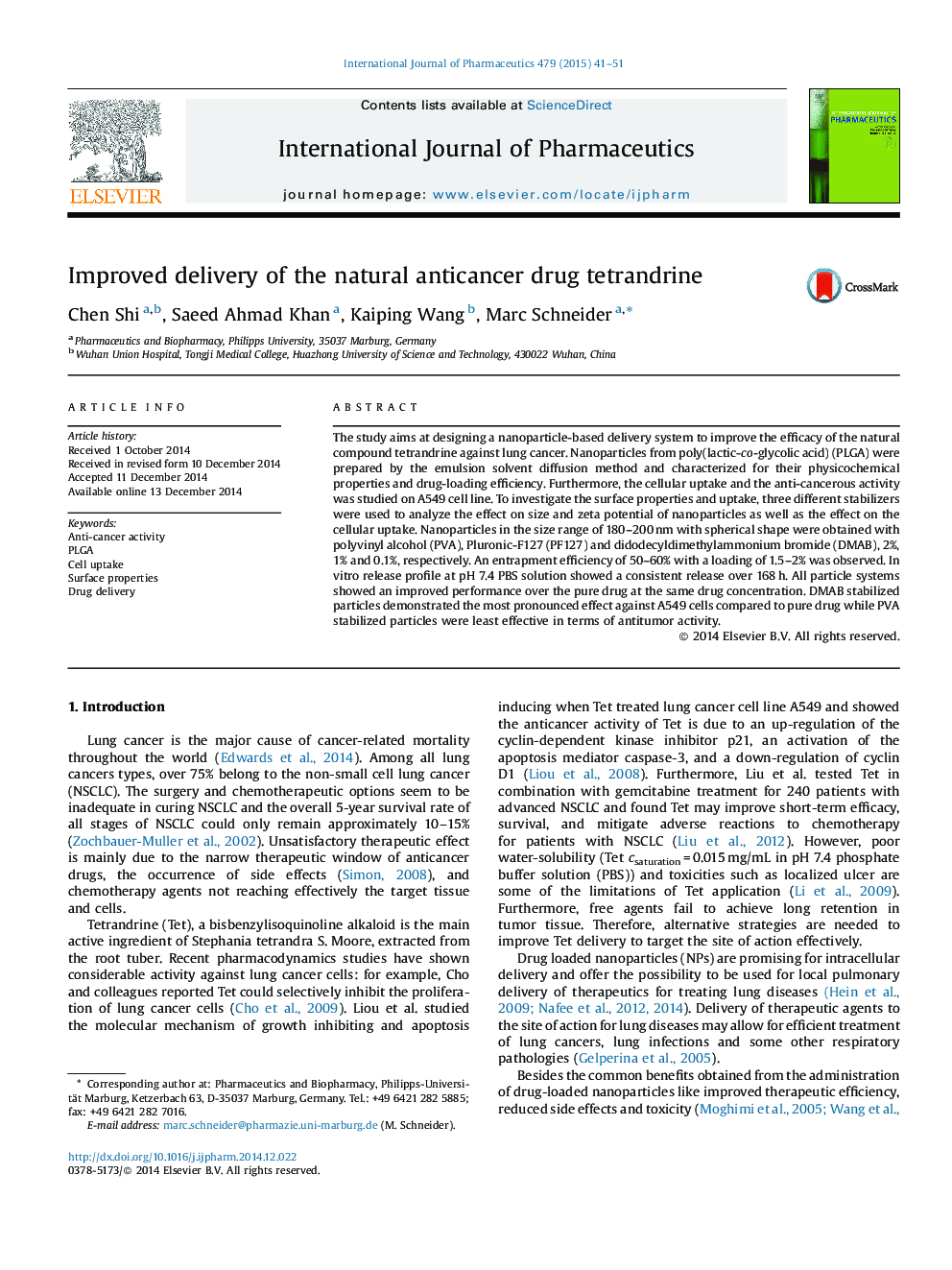| Article ID | Journal | Published Year | Pages | File Type |
|---|---|---|---|---|
| 2501546 | International Journal of Pharmaceutics | 2015 | 11 Pages |
The study aims at designing a nanoparticle-based delivery system to improve the efficacy of the natural compound tetrandrine against lung cancer. Nanoparticles from poly(lactic-co-glycolic acid) (PLGA) were prepared by the emulsion solvent diffusion method and characterized for their physicochemical properties and drug-loading efficiency. Furthermore, the cellular uptake and the anti-cancerous activity was studied on A549 cell line. To investigate the surface properties and uptake, three different stabilizers were used to analyze the effect on size and zeta potential of nanoparticles as well as the effect on the cellular uptake. Nanoparticles in the size range of 180–200 nm with spherical shape were obtained with polyvinyl alcohol (PVA), Pluronic-F127 (PF127) and didodecyldimethylammonium bromide (DMAB), 2%, 1% and 0.1%, respectively. An entrapment efficiency of 50–60% with a loading of 1.5–2% was observed. In vitro release profile at pH 7.4 PBS solution showed a consistent release over 168 h. All particle systems showed an improved performance over the pure drug at the same drug concentration. DMAB stabilized particles demonstrated the most pronounced effect against A549 cells compared to pure drug while PVA stabilized particles were least effective in terms of antitumor activity.
Graphical abstractFigure optionsDownload full-size imageDownload high-quality image (120 K)Download as PowerPoint slide
